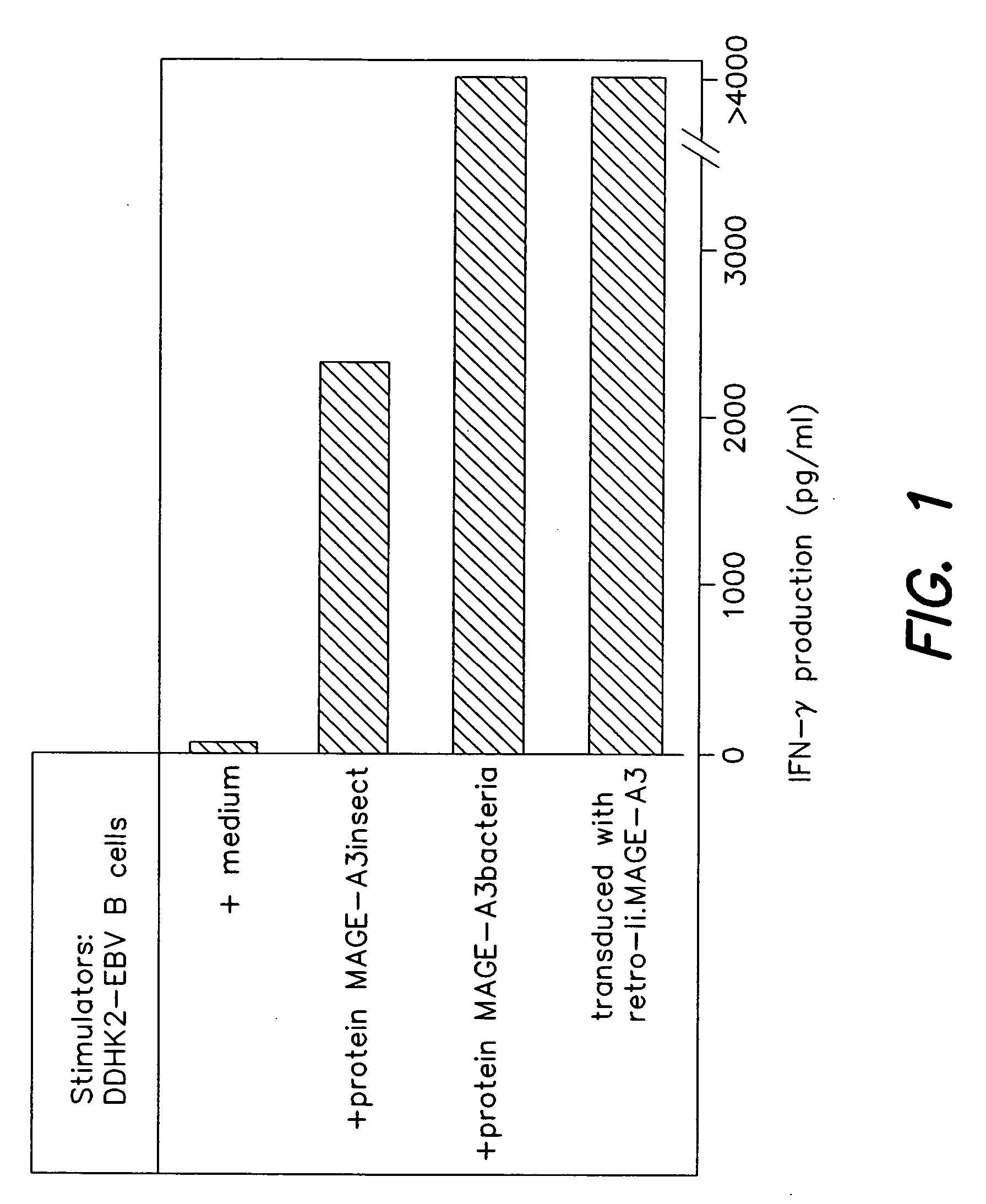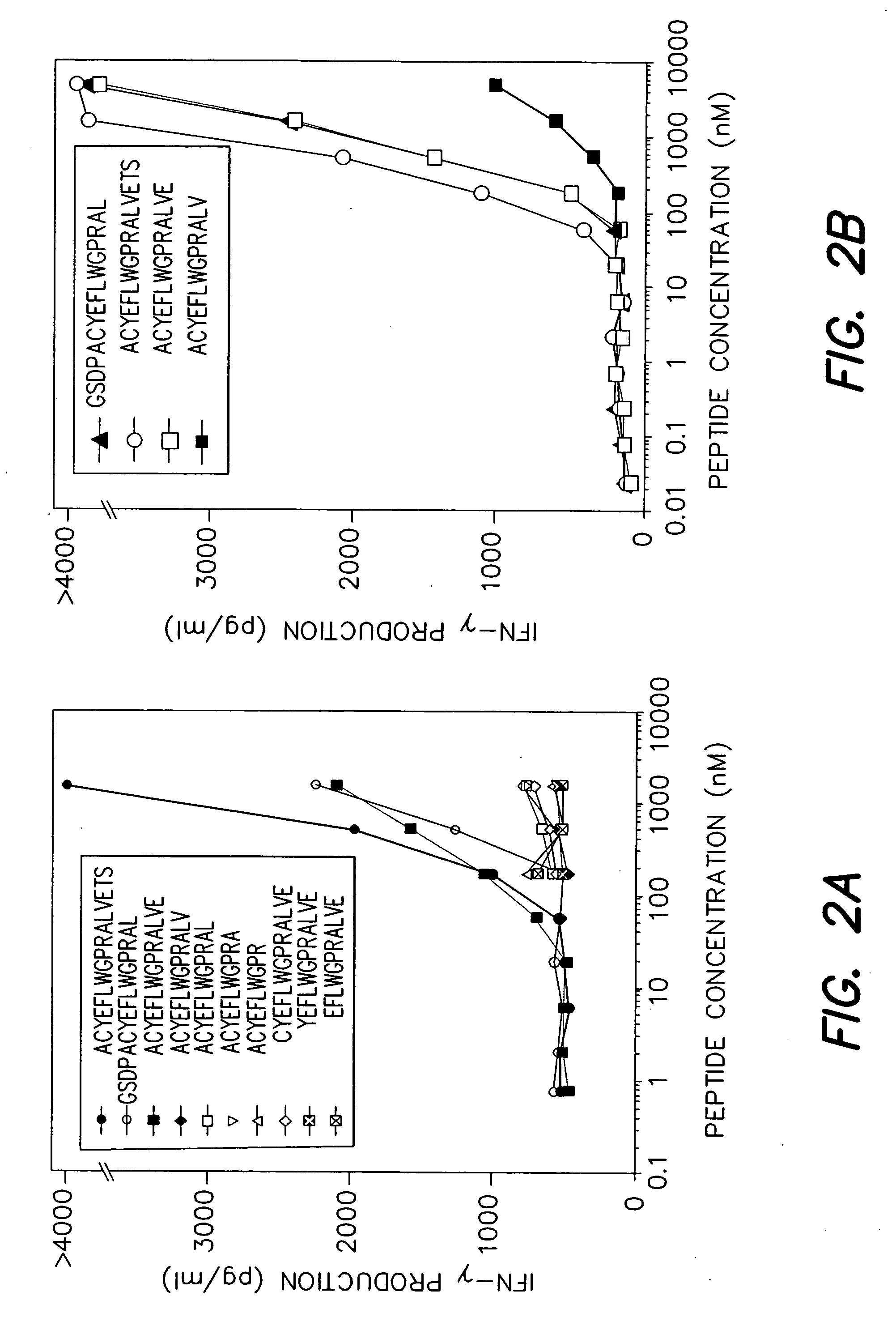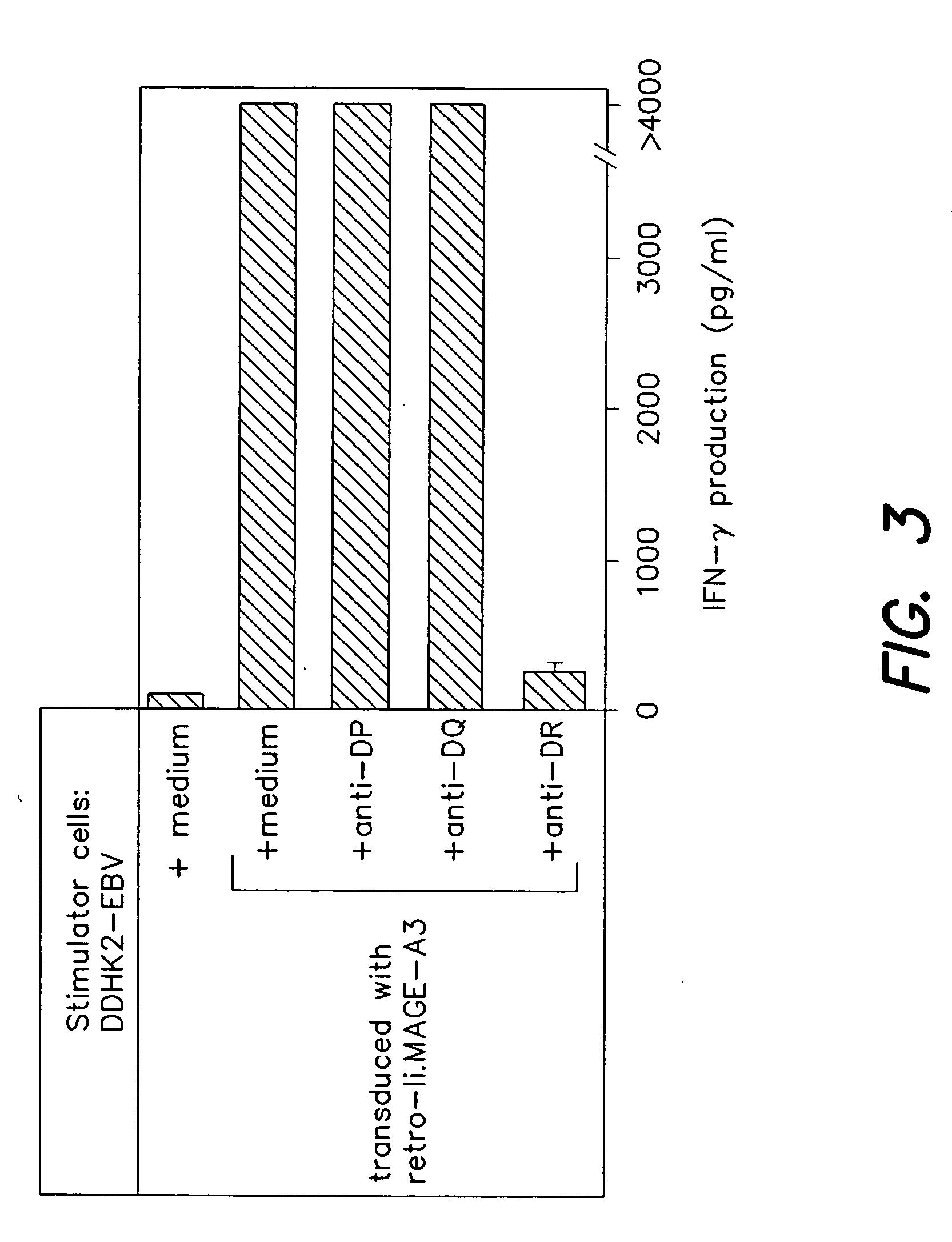MAGE-A3 peptides presented by HLA class II molecules
a peptide and hla class technology, applied in the field of magea3 fragments of tumor-associated gene products, can solve the problems of poor tumor-specific immunity, complex process by which the mammalian immune system recognizes and reacts to foreign or alien materials, and lysis of tumor cells, and achieve the effect of promoting the activation and proliferation of cd4+ t lymphocytes
- Summary
- Abstract
- Description
- Claims
- Application Information
AI Technical Summary
Benefits of technology
Problems solved by technology
Method used
Image
Examples
examples
[0139] Antigens encoded by MAGE-A3 and recognized by T cells are interesting targets for tumor immunotherapy because they are strictly tumor-specific and shared by many tumors of various histological types. A number of MAGE-A3 antigenic peptides presented by HLA class I molecules have been used in clinical trials and regressions of melanoma metastasis have been observed. We report here the identification of additional MAGE-A3 epitopes, including ACYEFLWGPRALVETS (MAGE-A3267-282; SEQ ID NO:4) and GSDPACYEFLWGPRAL (MAGE-A3263-278; SEQ ID NO:3), presented to CD4+ T lymphocytes by HLA-DR1 molecules, which are expressed in approximately 18% of Caucasians and 6% of Orientals. These new epitopes may be useful both for therapeutic vaccination and for the evaluation of the immune response in cancer patients. To identify th epitopes, monocyte-derived dendritic cells from a cancer patient were loaded with a recombinant MAGE-A3 protein and used to stimulate autologous CD4+ T cells. This patient...
PUM
| Property | Measurement | Unit |
|---|---|---|
| temperatures | aaaaa | aaaaa |
| final volume | aaaaa | aaaaa |
| final volume | aaaaa | aaaaa |
Abstract
Description
Claims
Application Information
 Login to View More
Login to View More - R&D
- Intellectual Property
- Life Sciences
- Materials
- Tech Scout
- Unparalleled Data Quality
- Higher Quality Content
- 60% Fewer Hallucinations
Browse by: Latest US Patents, China's latest patents, Technical Efficacy Thesaurus, Application Domain, Technology Topic, Popular Technical Reports.
© 2025 PatSnap. All rights reserved.Legal|Privacy policy|Modern Slavery Act Transparency Statement|Sitemap|About US| Contact US: help@patsnap.com



